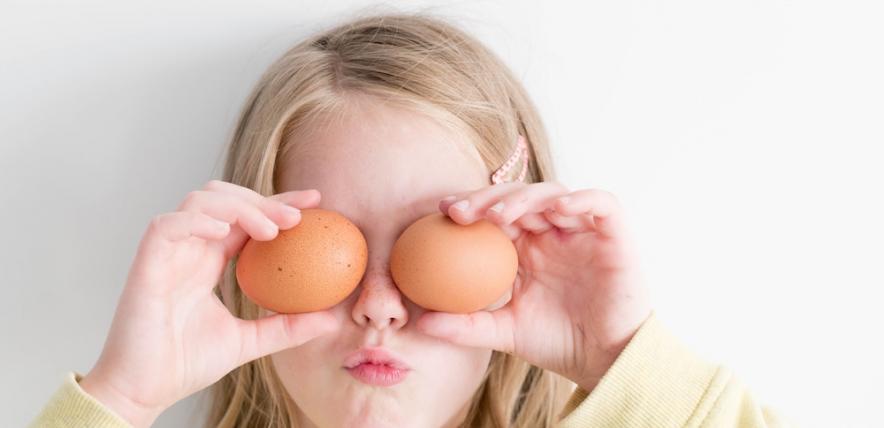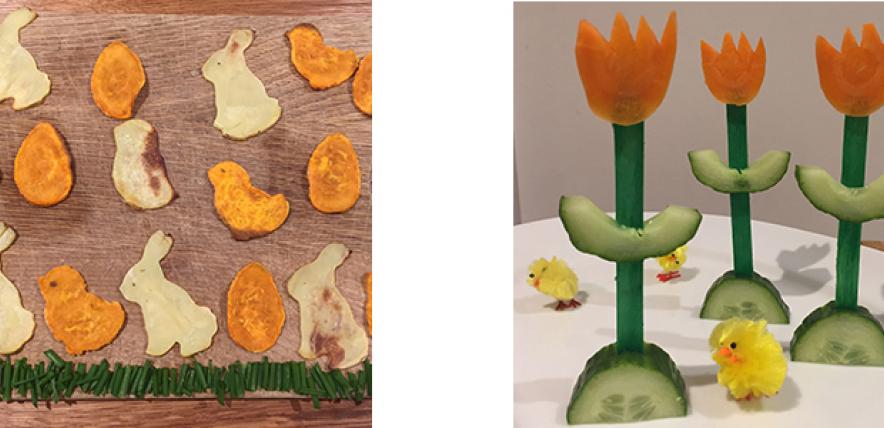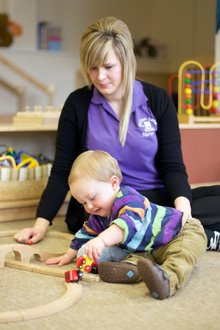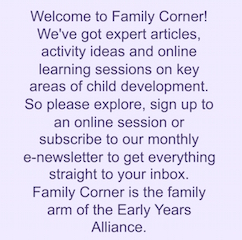By Alison Preston — a nutritionist with the Early Years Nutrition Partnership (EYNP).
Easter…. a time of celebration, a time to enjoy a long weekend and so often a time associated with eating a lot of chocolate! With the traditions of hot cross buns, Easter biscuits and chocolate Easter eggs, it can be a particularly challenging time of year to teach young children the habit of moderation.
But with some thought and preparation it is possible to make Easter a fun time for children, without overloading them with sugar!
Carrots can be Easter themed too!
Fruit and veg is really colourful and when cut up into interesting shapes can be used to represent all kinds of things. Cucumber and carrots can be cut into shapes to represent bunny ears, teeth, eyes or a nose; cress can be grass, strips of pepper can be bunny whiskers…. There are so many more examples! Use your imagination and let the children use theirs. They can help you put together some fabulous Easter creations.
Making food fun may encourage children to try things they wouldn’t usually. It also gives you an opportunity to talk about colours, textures, where the food comes from, what it looked like before it was cut up, what equipment you’ve used i.e. peeler or grater.
Here are some ideas to get you started.
1. Use cut up fruit and veg to make an Easter picture
Think halved grapes or pieces of banana for ears
Raisins or blueberries for a button nose
Thin strips of apple for whiskers
2. Use cutters to make Easter shaped sandwiches
Make some sandwiches with easy to cut fillings such as sliced cheese or hummus.
Encourage children to cut their sandwich into a shape using a cutter.
Decorate the shape with pieces of cut up fruit or veg
If you don’t have any Easter shaped cutters use large round ones and add cut up fruit or veg to make rabbit face.
3. Use rice cakes or oat cakes to make Easter bunnies for a snack or tea
Spread the rice cake or oatcake with cream cheese or hummus
Provide a selection of fruit and veg cut up into interesting shapes to make into an Easter egg or rabbit face
4. Make an edible spring garden
Use some small pots such as clean yoghurt pots or small bowls, fill with hummus to represent the earth, plant your pot with baby carrots, cress for grass, celery or bread stick trees.
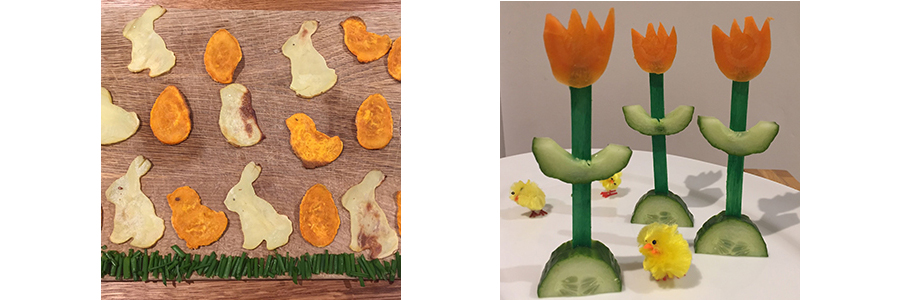
My colleague Catherine Lippe has also been busy getting creative in the kitchen to provide you with some inspiration.
Chocolate free doesn’t mean fun free!
We’re not suggesting that you ban Easter treats. Of course, in moderation an Easter egg or similar occasion foods are fine. The key is to keep that moderation! Planning other activities to mark the occasion that are fun for the children but don’t put an emphasis on food and eating, can help.
Getting the children involved in creating the different Easter themed foods described above, is one option. Here are some more fun activities that keep a food theme, but aren’t focused on eating it!
1. Egg decorating
You can have lots of fun with the children by getting artistic and decorating eggs. Hard boil some eggs, let them cool and leave them in their shell. Then paint them to make lovely, colourful eggs. If you’re all feeling very creative you can paint patterns or faces on the eggs.
Alternatively cut out some egg shapes from cardboard and give the children free reign with paints, crayons, stickers or anything else you have around, that they can use to decorate the eggs.
Once you’ve got these beautiful eggs, use them for an egg hunt!
2. Egg hunt
This Easter tradition that usually focuses on finding, then eating, chocolate eggs, can often lead to eating way too much! As an alternative, hide painted boiled eggs or cut out eggs. Have a selection of non-food treats (e.g. crayons, drawing pad, sticker etc.) ready, and once the children have found the eggs, they can swap them for the treats. It’s also a fun way to keep the children active.
This post first appeared on the EYNP blog in April 2017.
It was written by Alison Preston, a nutritionist based in Bristol.

